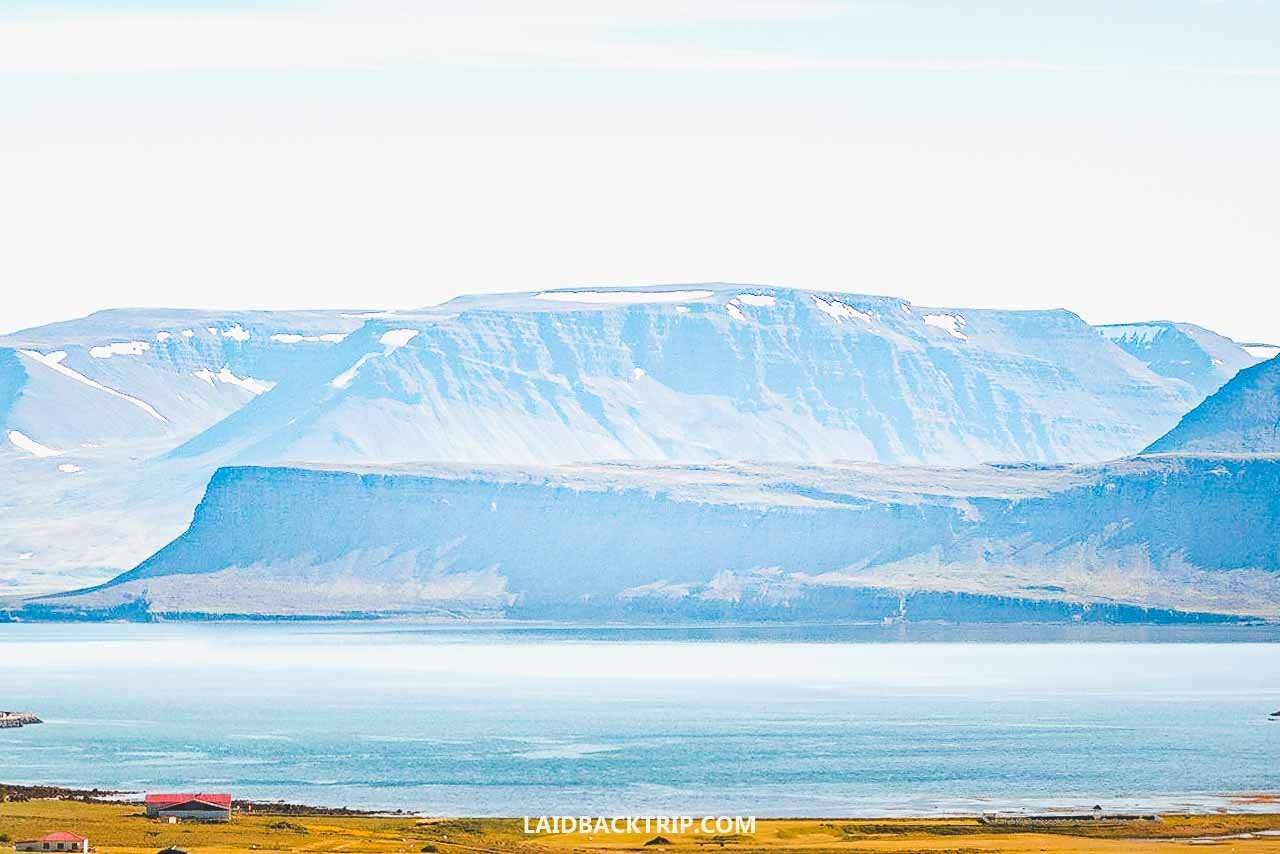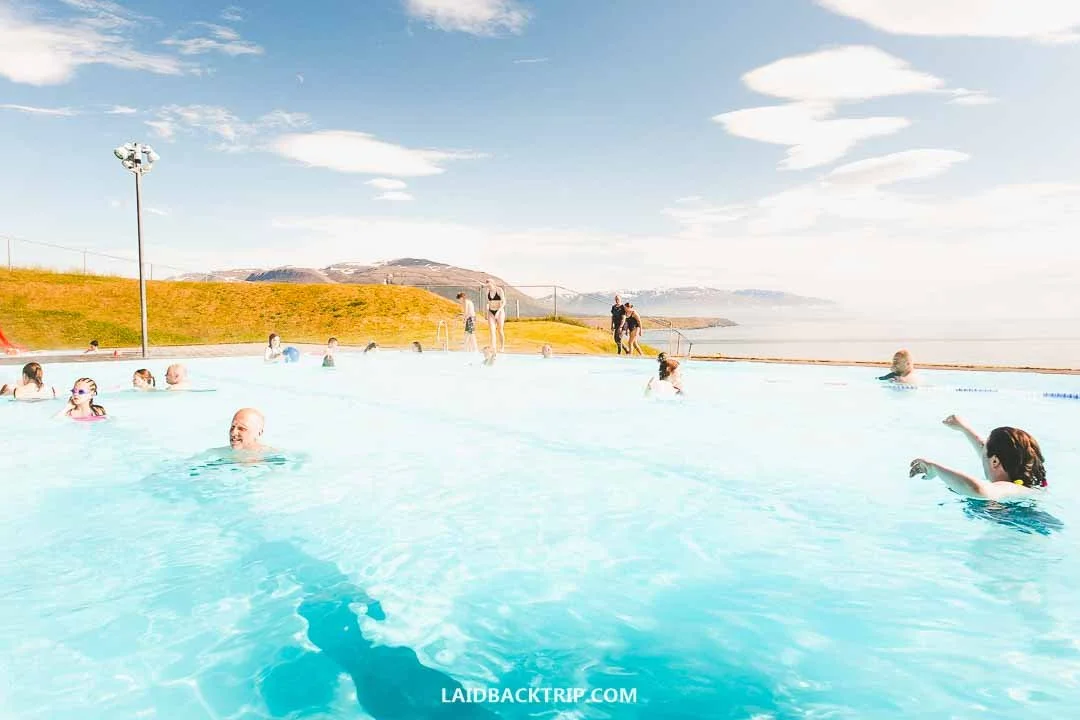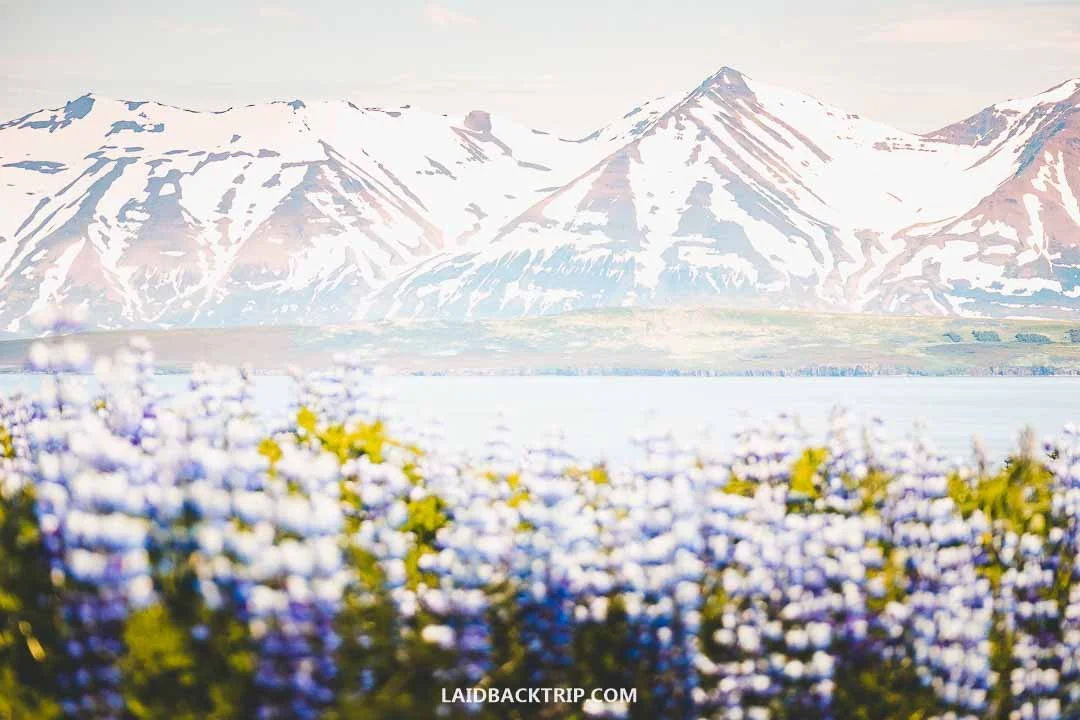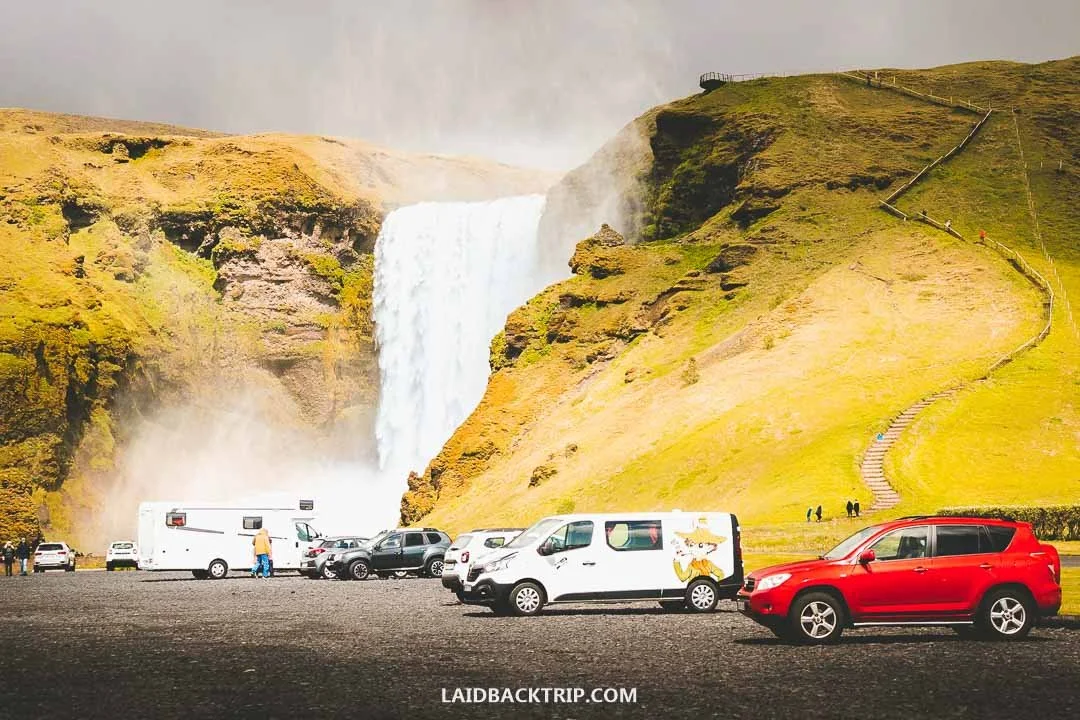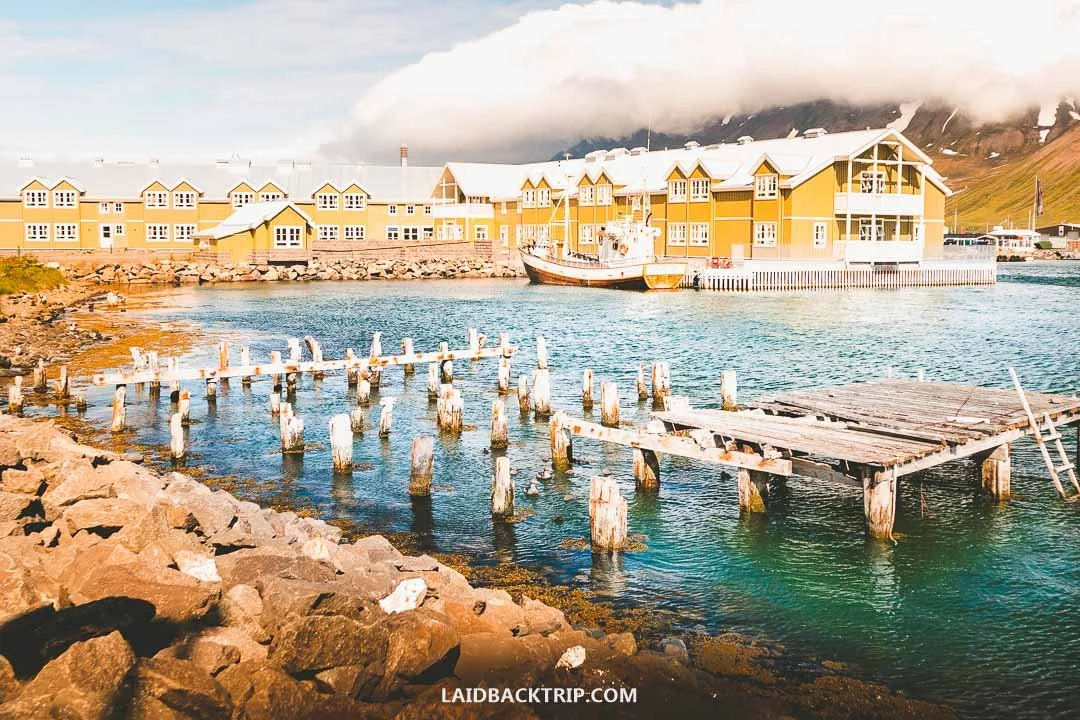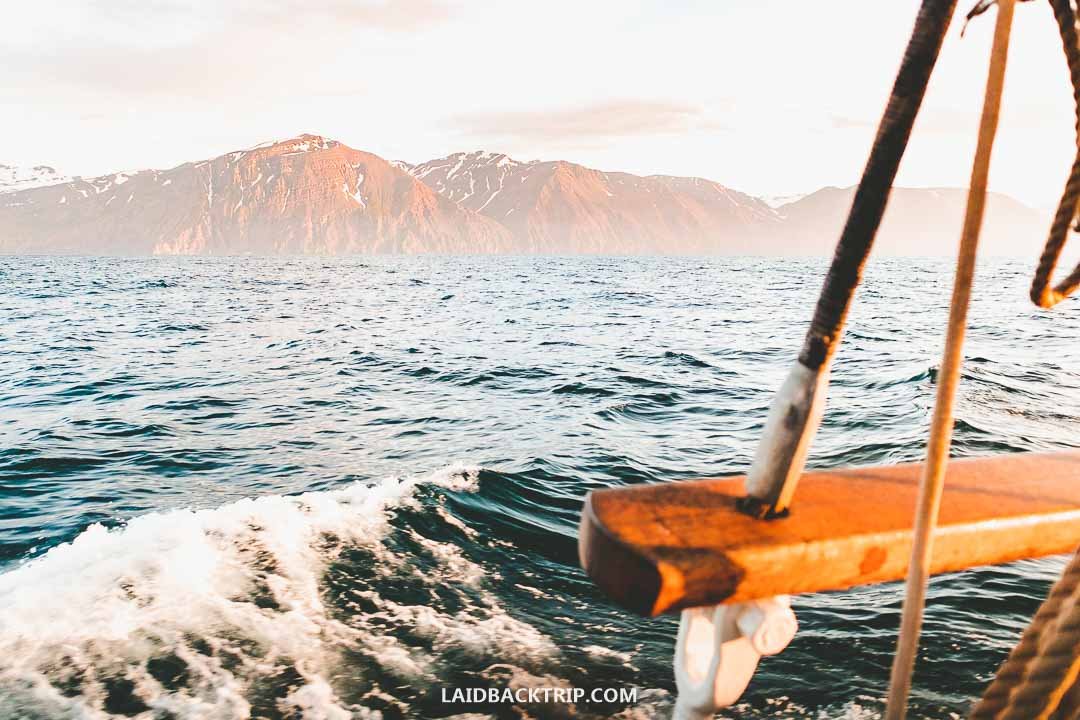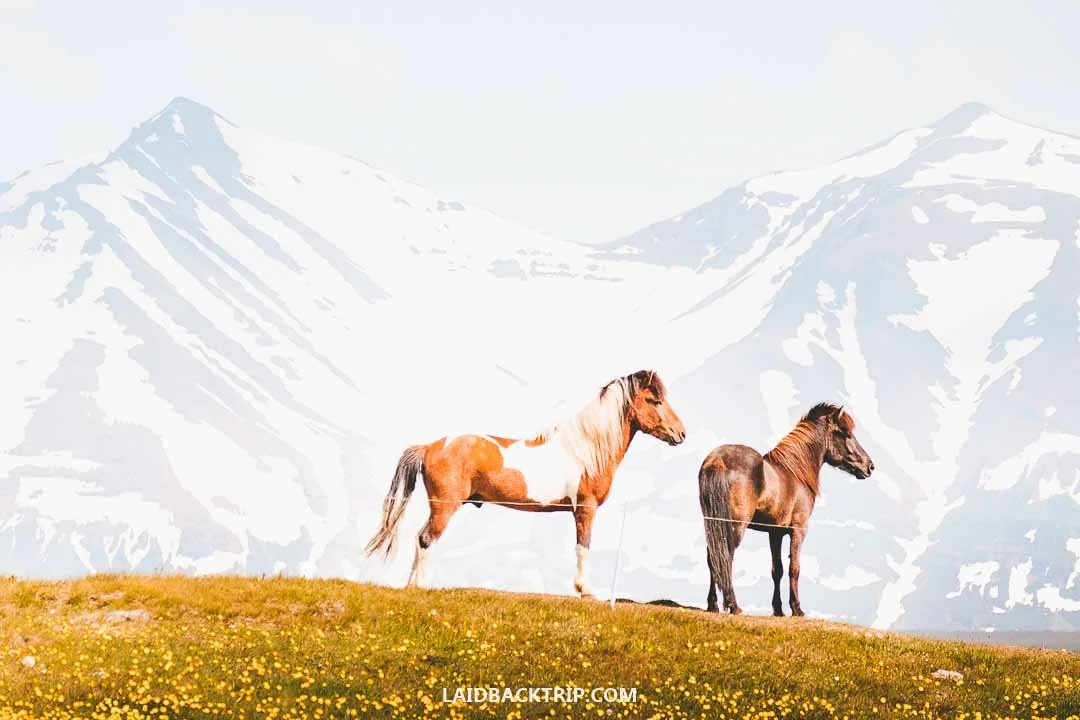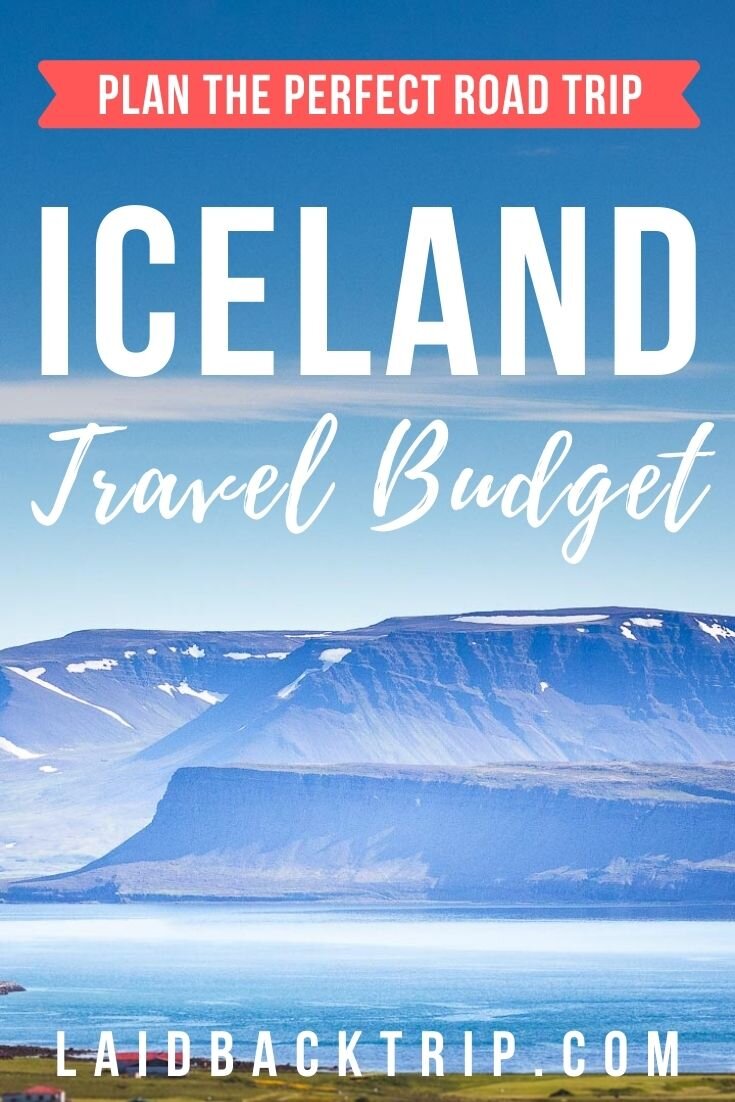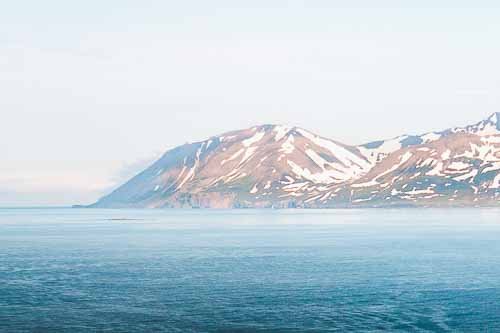Iceland Travel Budget: How Much Things Cost
How much should you budget for a trip to Iceland? In this travel guide, we've put together information on how much things in Iceland cost, including our personal Iceland travel budget. Can you travel around Iceland on a budget? How much money do you need? How much do things cost? We've got you covered.
Can you visit Iceland on a budget? This is probably the most burning question you might have when planning your trip.
Before our vacation, we tried to figure out how much things in Iceland cost and how much we could expect that the entire bill would be.
Well, to answer the question. It is possible to enjoy a trip to Iceland on a budget, but expect that the definition of the word budget is in this country a bit different than elsewhere.
In most of our travel guides, we want to inspire our readers to visit a destination, and it is certainly the same case with Iceland, but...
Iceland was one of the most beautiful countries we've ever visited, but it was also probably the most expensive country we've yet been to.
Ok, we've said it. Iceland is an expensive travel destination.
But we believe you already know that, and you've been probably saving money for this holiday for a while, and now you just need to figure out how much you must expect to pay for a rental car, accommodation, or tours.
It must be said that everyone has a different travel style, different needs of comfort, and most importantly, different income, and every traveler has a unique approach for how to spend their hard-earned money.
That's why it is not easy to write a general article, and this is why we want to look into Iceland's travel budget guide more closely to help you with the planning part.
So you can roughly know what to expect when it comes to your finances.
If you are just looking for the numbers and want to know how expensive is Iceland, we would say that you can expect to spend a minimum of 70 USD per person per day, and if you can splurge, only the sky is the limit.
But if you are looking for more detailed information and tips on saving money, keep on reading.
How Expensive is Iceland?
On the other hand, it is also necessary to say that every cent we spent in Iceland was totally worth it.
And we are glad we do not keep our money under the pillow but exchange it for unforgettable moments.
Your biggest expenses for sure will be accommodation (even though we'll share with you a few tips on how to save money), car rental (read the next paragraphs, as we have an exclusive discount on campervans for you), tours, and food.
Fortunately, Iceland is rich in natural attractions, but except for a few parking lots that charge a reasonable fee, visiting national parks, waterfalls, beaches, and overall all must-visit places is free of charge.
To set this post in a context. We are from the Czech Republic.
Even though we know our salaries are laughable compared with other western countries, we believe even travelers from Germany, the UK, or the USA won't find Iceland exactly cheap.
When we saw prices in stores, we quickly calculated that everything was approximately two or three times more expensive than in our country.
When we had to buy an extra SD card or repair a flat tire, we were charged three times more than we would have found reasonable in our home country.
The higher rates have a reason, though. Iceland is an island; most of the things must be imported to the country, and prices reflect that.
And in the end, it's just a small price for the privilege to see places such as Kirkjufell Mountain, Dettiffos, or Reynisfjara Black Sand Beach in person.
Iceland Travel Budget
Here we would like to share with you how much money you need to travel around Iceland, including our total bill for a two-week Iceland trip.
If you are looking for more travel guides on how to plan your trip, definitely check out our Iceland 2-week itinerary to have an idea of what places we visited and what was our travel style.
Before we dig in, there are a few tips we think are worthwhile to know.
Cash or Credit Cards
First of all, Iceland is a cashless country, and you basically do not need cash for your travels.
There were a few exceptions where we needed money for cash-operated showers at campsites, but it was only because we arrived late when the manager had already left the site, and there was no other option.
Normally it was possible to pay for showers by credit card and receive coins in exchange.
When to Go
The second thing you should consider, especially if you want to save money on your Iceland trip, is traveling out of the main season.
Yes, without denying, the best time to visit Iceland is between June and August.
These months mean summer, weather conditions are slightly better (even though it is not a rule), and days are long, which makes the road trip easier.
On the other hand, great weather attract crowds; car rentals are more expensive, same as accommodation.
It can be very hard to find a room in the most popular areas, and almost impossible to find a room that does not cost you a fortune.
Simply put, consider traveling offseason.
Every month has pros and cons, but the decision to avoid the busy season might save you hundreds, if not thousands of dollars.
Solo Travel or Group Travel
Last but not least, it is always better if you travel as a group of people.
Four people can often sleep in one room, and you can share the cost of the car rental and fuel.
Flight Tickets
There is probably no expense that would be more individual than flight tickets.
As we have direct flights from Prague to Reykjavik, and the flight takes only about four hours, flight tickets were not expensive, if we compare it with other items on our bill.
What we could read, we are not an exception, though, and many travelers from all over the world stated that flight tickets to Iceland are not that expensive.
Nowadays, the price of flight tickets also depends on the weight of your luggage and whether you are good only with carry-on or if you need checked-in luggage.
It is quite tricky.
When we flew to Jordan last year, we were able to pack all our stuff in carry-on luggage.
But Iceland's weather requires a bit different approach. Some people travel with packed sleeping bags and tents.
But even if you do not need this equipment or decide to rent it on the spot, you'll need to pack layers and warm clothes for ever-changing conditions.
That's why you'll most likely have to pay for extra luggage.
As we traveled as a couple, we needed one checked-in luggage up to 23 kg, two carry-on backpacks up to 8 kg, and one small backpack up to 3 kg.
Our expenses for flight tickets: 320 USD per person for a return ticket.
Airport Transfer
If there's one expense travelers often forget to include in their budget, it is the airport transfer.
Especially here in Iceland, it is quite expensive to get from Keflavik International Airport to Reykjavik.
Depending on your plans, you might not need the airport transfer at all.
Rental Car
Some rental companies have their offices at the airport, so it is definitely a plus.
Some of them (mostly campervan companies) are located in Reykjavik or Reykjavik's suburbs, so you will most likely need to get from the airport to the rental office.
Check out your rental company as some of them offer an airport transfer (it is usually not free, though, and they do not run all day long).
Public Transport
The cheapest option on how to get from the airport to Reykjavik is by public transport, but it does not go as often as you would expect, and moreover, it is not a direct line.
As we arrived in Iceland around midnight, we had basically only two options on how to get to Hafnarfjordur, which is a small town close to Reykjavik, where we were supposed to pick up our campervan the next day.
Taxi, which is super-expensive (a single ride can cost anything between 110 and 200 EUR), and a shuttle bus.
Taxi
If you travel as a group that is larger than two people, you might find the taxi reasonably priced.
Here, you can book a Reykjavik - Keflavik Private Airport Transfer in advance.
Shuttle Bus
We opted for a shuttle bus Flybus. The one-way ticket from the airport to Reykjavik's bus terminal or vice versa costs 25 USD, which is not that bad.
Here, you can reserve Keflavik Airport Bus Transfer to/from Reykjavik.
Our expenses for airport transfer: 25 USD per person, one way.
Car Rental
Iceland is one of those countries that seem to be designed for an awesome road trip.
We must say that by using public transport, we would be able to visit probably one-tenth of all places.
Choosing the best rental car or campervan is therefore absolutely essential. Before you start picking the best car for your trip, it is good to know your alternatives and the cost.
In general, you have several essential questions to answer.
Car or Campervan
First of all, you need to figure out whether you prefer traveling in a classic car or a campervan.
Both options have pros and cons.
The initial cost of the campervan is slightly higher, but if you decide to rent it, you will most likely sleep at campgrounds.
Campgrounds are many times less expensive than hotels or other types of accommodations, and you do not have to make a reservation in advance.
We knew how is it like to sleep in a campervan as we had this experience from New Zealand, Australia, or Canada, and we loved it.
Sometimes, you have less comfort, and things like cooking are a bit more challenging, but freedom is priceless.
Same as there are various types of cars, you have many kinds of campervans.
From very basic ones to quite luxurious motorhomes that fit even five people. Once you know what is best for you, here's another catch.
Manual or Automatic Transmission
Do you prefer manual or automatic transmission?
Cars and campervans with automatic transmission are more expensive, so those of you who know how to drive stick can save money here.
2WD or 4WD
Last but not least, you must create your itinerary and choose what places you want to visit.
Most of the places along the iconic Ring Road are accessible by 2WD cars, but highlands and F-roads can be reached only by 4WD.
Unsurprisingly, 4WD cars are more expensive, sometimes even three times.
Therefore, the cheapest option that still offers some level of comfort, based on our experience, is a small 2WD campervan with manual transmission.
Tent Sleeping
Probably even cheaper would be a car in combination with sleeping in a tent, but we saw a few people who slept in a tent, and not only were they wet all the time, but the omnipresent wind always made it hard even to build the tent.
Also, if you travel during the colder months, we recommend you to pay a bit more for a car that has a heater.
Places such as East Fjords, Diamond Circle, or Snaefellsnes Peninsula will be cold.
Budget
How much should you budget for renting a car in Iceland?
Prices often depend on demand and season - rates are lower between November and March - but there's a pattern.
The cheapest car starts at 45 - 55 USD per day, while the most affordable campervan can be found for around 80 USD per day.
The most popular campervan that was driven by the majority of travelers cost around 160 USD per day.
As you can see, car rental will be one of your biggest expenses, so it is worth it to take some time before you make the final decision.
Sometimes it is not worth it to go for the cheapest option, but Iceland is a modern country, and from what we could see, all cars were in acceptable condition.
Renting a Car or Campervan
Cars in Iceland come with the basic CDW insurance - we did not pay for extra protection, but you might consider adding extra insurance that fluctuates between 12 and 70 USD per day, depending on what it covers.
When searching for a rental car, we usually use Rentalcars.com.
Our expenses for car rental: 85 USD per day.
Fuel
The Iceland travel budget consists of many details. If you rent a car, you have to budget for fuel inevitably.
We are sometimes surprised by how many people forget to do this essential thing.
Fuel in Iceland is quite expensive, whether you're in Stykkisholmur, Seydisfjordur, or Isafjordur.
Even though the price differs by a provider (we always fueled our car at N1 gas station), expect to pay anything between 1.50 to 1.70 USD per liter.
Gas stations are all over the country, even in the more remote areas, but we always took a full tank once we had the opportunity, we never waited to find a less expensive petrol station.
It is good to know that you pay for gas by credit card (in case you want to pay cash, you need to find a staff first, and many stations are unserviced), and the machine will always block the higher amount of money, so always make sure your limit is sufficiently high.
How much money you spend on fuel depends on your itinerary and car consumption.
Our expenses for fuel: In two weeks, we drove 4500 kilometers, and the gas cost was 470 USD for the entire trip.
Parking Fees
As we've already mentioned, the services in Iceland are not cheap, but what really helps your budget is the fact that all of the natural attractions are free.
Only a few places we visited charged for parking.
It was Thingvellir National Park, Seljalandsfoss Waterfall, Kvernufoss Waterfall, and Skaftafell National Park.
There are probably a few more places where you need to pay a parking fee, but these are the only landmarks we visited where we had to take out our credit cards.
Our expenses for parking: 22 USD.
Accommodation
If there's one thing that is much more expensive in Iceland than we are used to, it is accommodation.
Prices for rooms are very high, and it was also one of the reasons why we decided to sleep in a campervan and use the dense network of campgrounds.
If you want to sleep in hotels, hostels, or B&Bs, the sooner you make the reservation, the better.
Popular places along the South Coast are often booked out several months in advance, and the available rooms are usually overpriced.
It is only up to you whether you prefer sleeping in dormitories in hostels, three-star hotels, or you require the best service available.
One thing is sure - budget two to three times more than you usually do in cheap travel destinations.
Prices
Cheapest hostels usually start from 50 USD for a room with a shared bathroom.
Most mid-range hotels are within a 90 - 150 USD price range per room per night.
And the more luxurious properties near the top attractions are not afraid to ask for 200+ USD per night.
To make sure you get the best price possible, search for accommodation in Iceland on Booking.com, which is our favorite hotel search engine.
Camping
Campgrounds in Iceland are usually basic but clean, and most of them include toilets, showers, and a kitchen.
Sometimes we had to pay extra for taking a shower, but it was usually an exception.
A night at a campground can cost anything between 10 and 15 USD per person per night.
Although it is quite a lot for staying in a grassy area, it is still much cheaper than a room in a hotel, and the significant advantage is that you do not have to make a reservation in advance.
We slept thirteen times at campgrounds and one time in a hostel in Hafnarfjordur, right after our arrival before we picked up the car.
Our expenses for accommodation: We paid 26 USD per night for both of us, which makes 13 USD per person per night.
Food
We love food and tasting new cuisines. But from the very beginning, it was clear that our trip to Iceland would be very modest in this regard.
Your Iceland travel budget can turn either way, depending on where you are going to eat.
You can save a lot, but restaurant bills can also change the whole game entirely.
Because we knew the prices were high, we were grocery shopping and cooking our own food from day one.
Eating Out
If you want to eat in restaurants, go ahead, but expect to pay 15 to 20 USD for sandwiches and fast food meals and anything between 30 and 45 USD for a one-course meal in a regular restaurant without drinks.
To be honest, we are used to paying similar rates for two or sometimes even three-course meals in a slightly nicer restaurant in the Czech Republic, so this option was off the table.
We certainly do not want to put you off eating in the restaurants, for sure.
Depending on your budget, you can enjoy a nice dinner out. We just think you would spend much more than necessary on food while eating out every day, three times.
Grocery Stores
We did grocery shopping mostly in Bonus, Netto, or Kronan grocery stores.
As most of the fruits and vegetables are imported, it is good to know that they are usually not as fresh as we had expected them to be.
Preparing Our Own Food
What did we buy to keep our Iceland travel budget as low as possible? For breakfast, we had cereals with apples and bananas and tea.
Lunch normally consisted of eggs, canned beans, tuna fish, or pasta. Dinner was lighter; we ate bread, vegetables, cheese.
We must admit that in order to keep our expenses low, we are able to live very frugally.
We try to avoid sugar, so we do not buy sweets, we do not eat junk food, and we do not drink coffee in our regular life, so it is not a problem for us to maintain the same style on the road.
Drinks
One of the best things in Iceland is that the water is drinkable, so you can use less plastic when traveling.
Just bring your reusable water bottle.
If there's one thing that is even more expensive than food, it is alcohol (except for the airport where alcohol is tax-free).
The reason behind high prices is the alcohol tax, which is insane. You cannot buy alcohol in grocery stores but specialized liquor stores.
A draught half-liter beer will set you back between 7 to 10 USD.
Our expenses for food: In two weeks, we spent 240 USD on food for both of us.
Entrance Fees
Visiting natural attractions in Iceland is mostly free of charge.
Only the artificial ones are usually paid for, which is good news for your Iceland itinerary (and your wallet) because nature is what makes the country so attractive.
It is only up to you how many paid attractions you decide to visit.
Tickets
One of the best things to do in Reykjavik is to visit museums. As we had only a couple of hours to explore the capital city, we did not have this expense.
Hot pools are other places that are usually paid, even though we found some free for example in East Fjords and Westfjords.
We decided to visit Myvatn Baths in Northern Iceland, also the famous Blue Lagoon on Reykjanes Peninsula, and the star of Trollaskagi Peninsula, infinity Hofsos Hot Pool.
On the day of our visit, the entrance fee to Myvatn Baths was cheaper, but normally it costs similarly as the Blue Lagoon.
We also opted for the cheapest ticket in the Blue Lagoon. Both most famous spas should be booked in advance.
Reserve your Blue Lagoon Ticket and Myvatn Nature Baths Ticket.
Tours
Another extra expense we had was a whale-watching tour in Husavik.
How much money you need also depends on whether you take more tours like this one.
Iceland is a popular country with tourists, and if there's an exciting place, there's probably a tour that can take you there.
Tours usually cost between 50 USD and several thousand dollars in the case of multi-day tours.
Our expenses for entrance fees and tours: 152 USD per person.
Gear
We think that when you plan how much to budget for Iceland, you should also include the shopping you must do before the trip.
Thanks to our extensive travel experience from Patagonia, Nepal, and New Zealand, we have a lot of outdoor clothing and camping gear; therefore, we did not have to buy much stuff.
If you are a newbie hiker, camper, or destinations like Iceland are usually not on your list, you might want to spend a few hundred dollars for waterproof and windproof clothing or some essential camping gear.
The weather in Iceland is harsh, and investing some money in proper gear is worth it. And yes, a good rain jacket or down jacket is not cheap.
Plenty of outdoor gear will last years, so you can repeatedly use it in your future adventures.
Here, you can find our Iceland Summer Packing List.
Extras
When you plan your Iceland travel budget, you should always think of extra expenses.
For example, we had a flat tire.
When we were taking photos of puffins at Borgarfjordur Eystri, we realized that we did not have enough memory cards, with us and had to buy an extra one in Akureyri.
Sometimes you want to buy a souvenir.
You need to have a change for restrooms unless you are ok to go in the woods every time.
You might need to use lockers to keep your backpacks safe in the bus terminal.
As we are from Europe, we could use our SIM card with data and did not have to buy a new one, but you might need to buy a SIM card to have access to the internet on the road.
We could go on and on.
We would say it is always fine to budget 100 USD per person for additional expenses and for things you decide to purchase along the way.
Travel Insurance
Yes, we are the type of travelers who never leave home without travel insurance.
Buying travel insurance for a trip is for us as natural as buying a flight ticket.
You never know what can happen, and getting medical treatment in a foreign country can put you in debt for life.
It is only up to you whether you have insurance included with your credit card (always check the conditions) or if you buy it separately, it is always worth it to be covered.
Travel insurance protects against theft, flight delays, injury, illness, cancellations, and much more.
World Nomads provides travel insurance for travelers to cover their trip essentials, including sports and adventure activities.
SafetyWing is affordable travel insurance for backpackers, long-term travelers, and digital nomads.
Travel smarter and safer!
How Much to Budget for Trip to Iceland
To be honest, we do not think you can travel much cheaper than we did, but you can prove us wrong.
Sure we could have hitchhiked and slept in tents, but as we wanted to experience the most Iceland has to offer in a slightly more comfortable way, it was out of the question.
We could have skipped hot pools and whale watching tours, but this was something we were willing to splurge on, and retrospectively, we know it was worth it.
We spent by traveling around Iceland fourteen full days, and our total bill for the two of us was 3330 USD without travel insurance, and we also did not count extra expenses that are highly individual.
If we deduct flight tickets, Iceland travel budget was 96 USD per person per day, which is quite a lot, as we remember days when we budgeted 50 USD for both of us in South America.
This amount is the low end, you might be able to save a few more bucks, probably in a combination of rental car and tent.
Mid-range travelers should expect to spend anything between 130 and 150 USD per person per day.
The sky is the limit for those of you who do not worry about how much things cost.
Starting from 200-300 USD per person per day, you will have a fancy vacation.
Hopefully, you have found this post helpful, and planning your Iceland travel budget will be much easier thanks to this guide.
Travel Resources
Here you can find links to all the travel resources we use and which you might find helpful when planning your next holiday.
Accommodation: When looking for accommodation, we usually search hotels via Booking.com or Hostelworld.
Tours: Although we love to travel independently, some places are better to visit with a guided tour.
We prefer GetYourGuide for its easy-to-use interface and solid reputation. Another great alternative is Viator.
Rental Cars: When going on a road trip, we always use Rentalcars.com, a reliable site for booking a rental car in advance.
Flight Tickets: When looking for flight tickets, you can search Skyscanner to find the best price.
Travel Insurance: World Nomads and SafetyWing cover against risks of travel.
